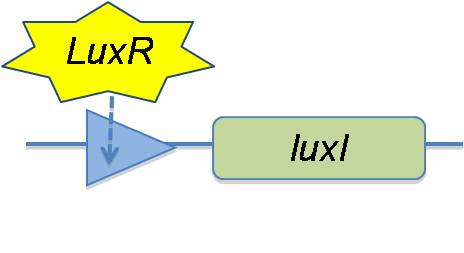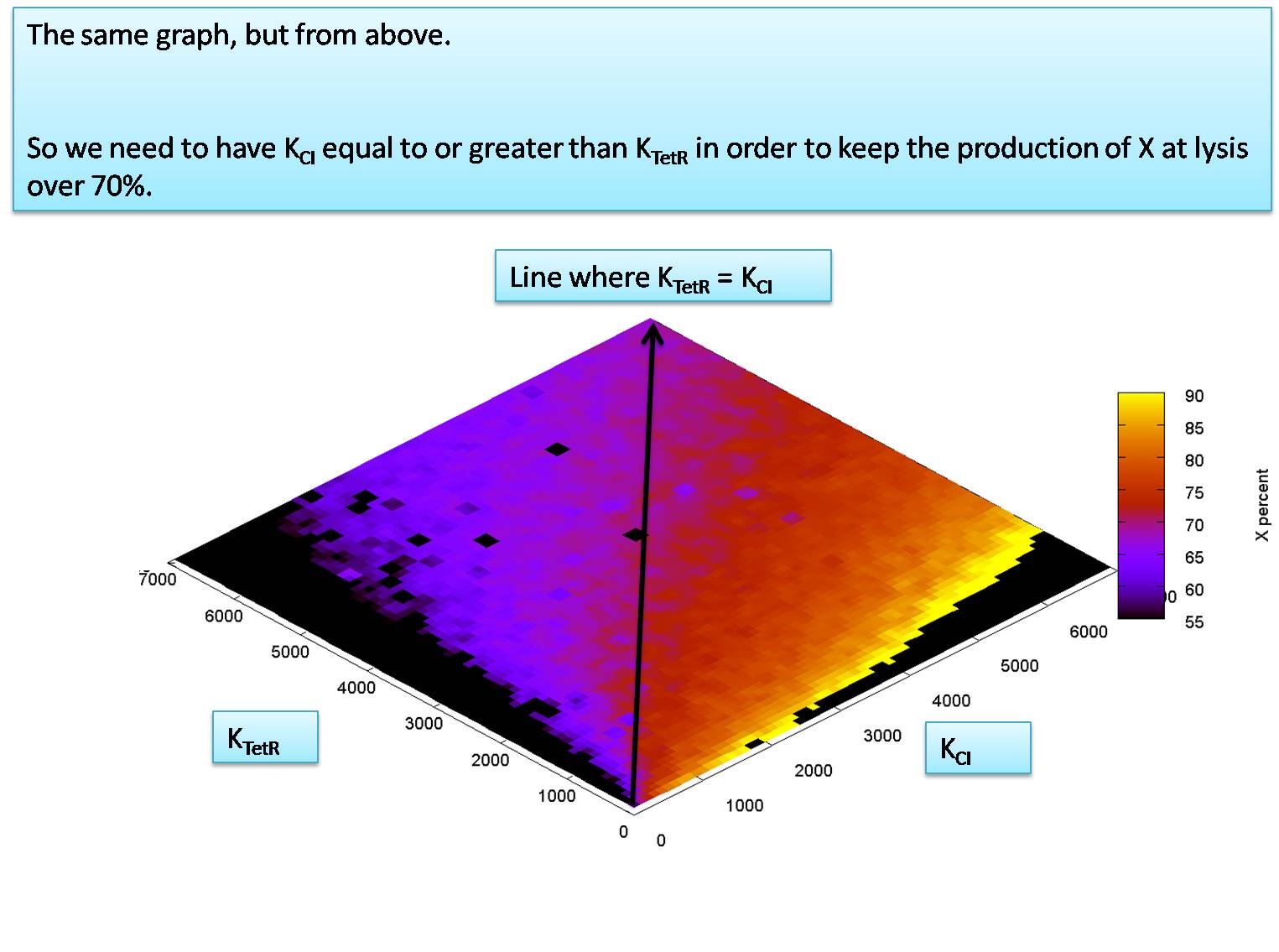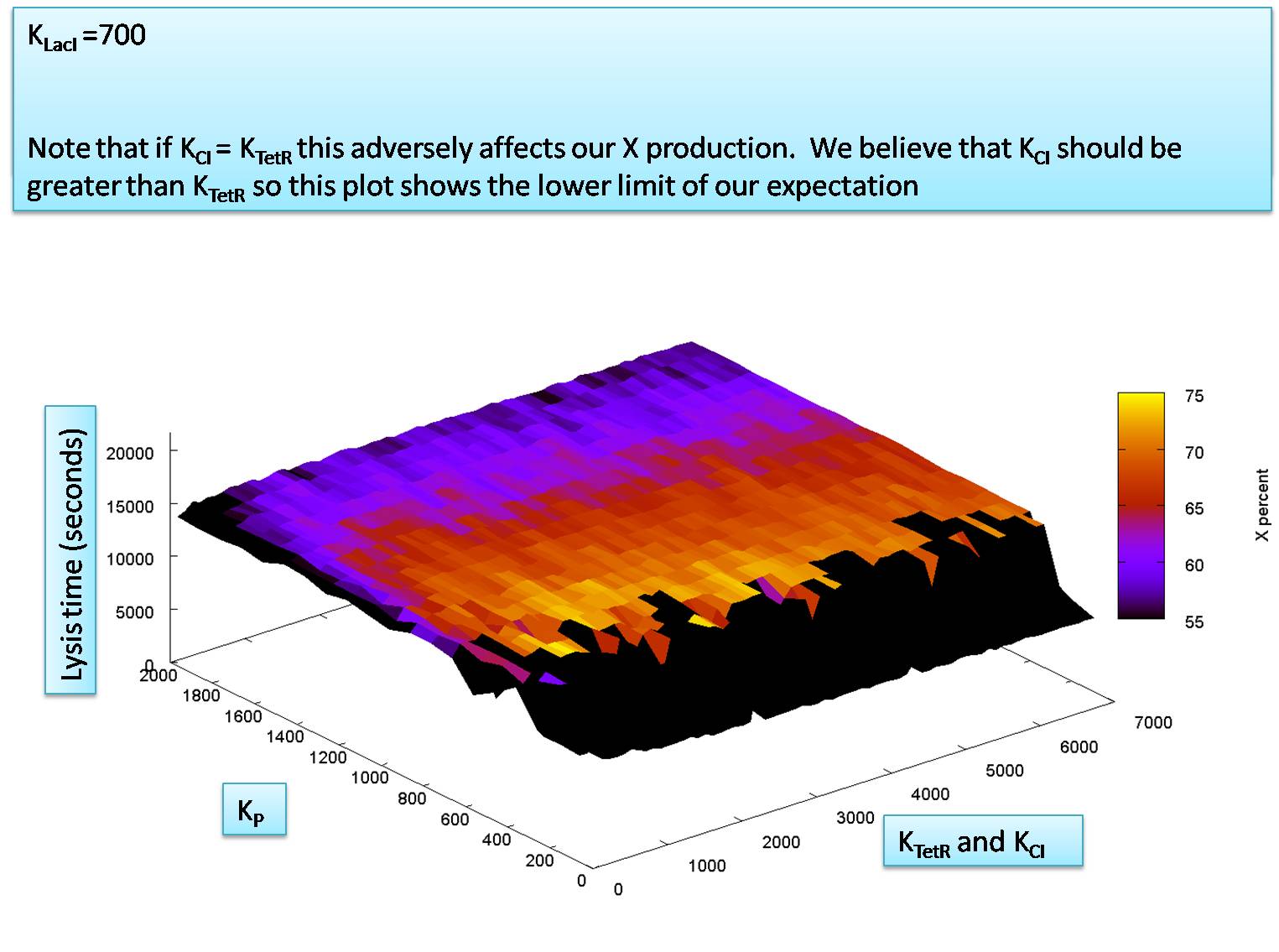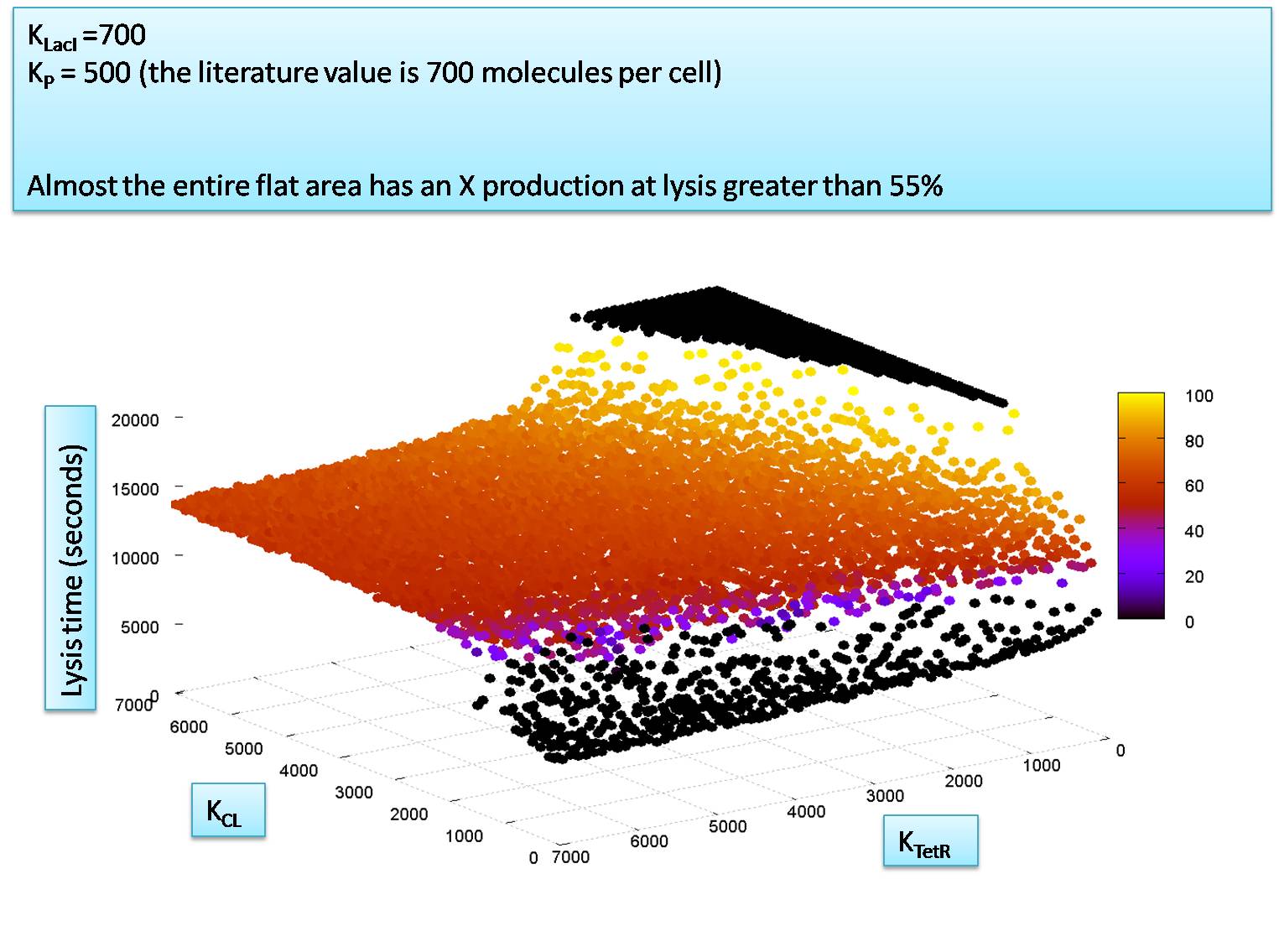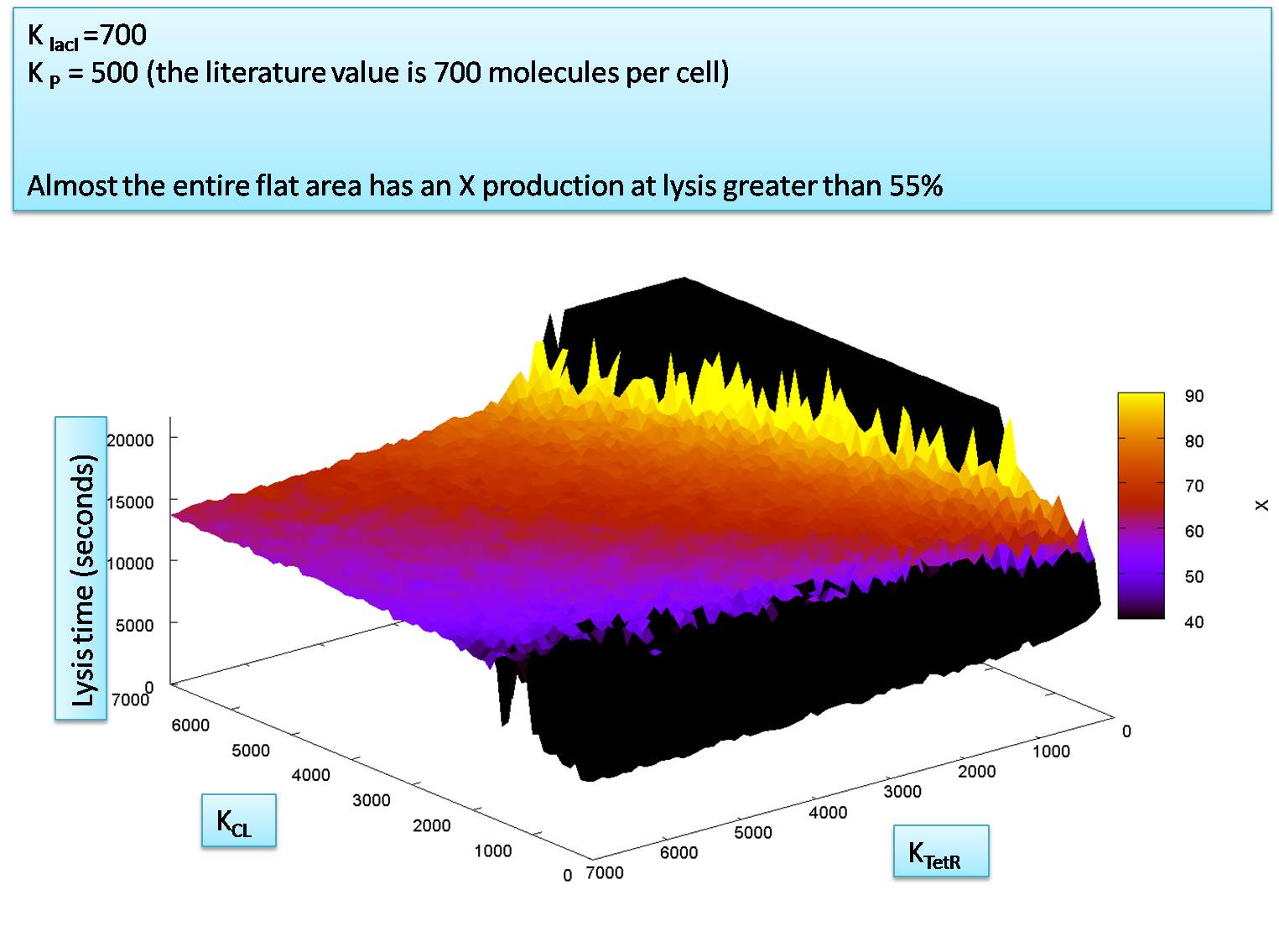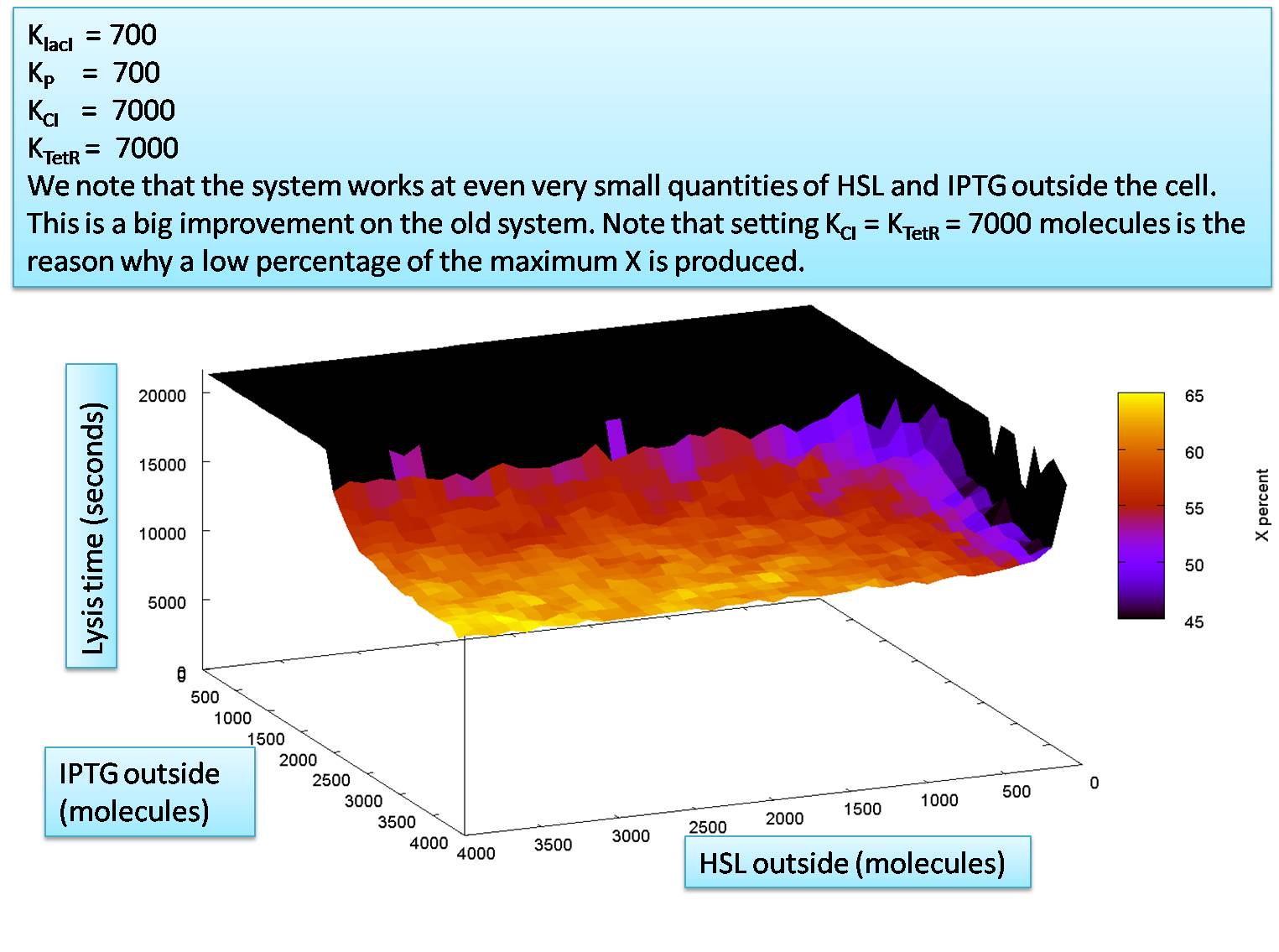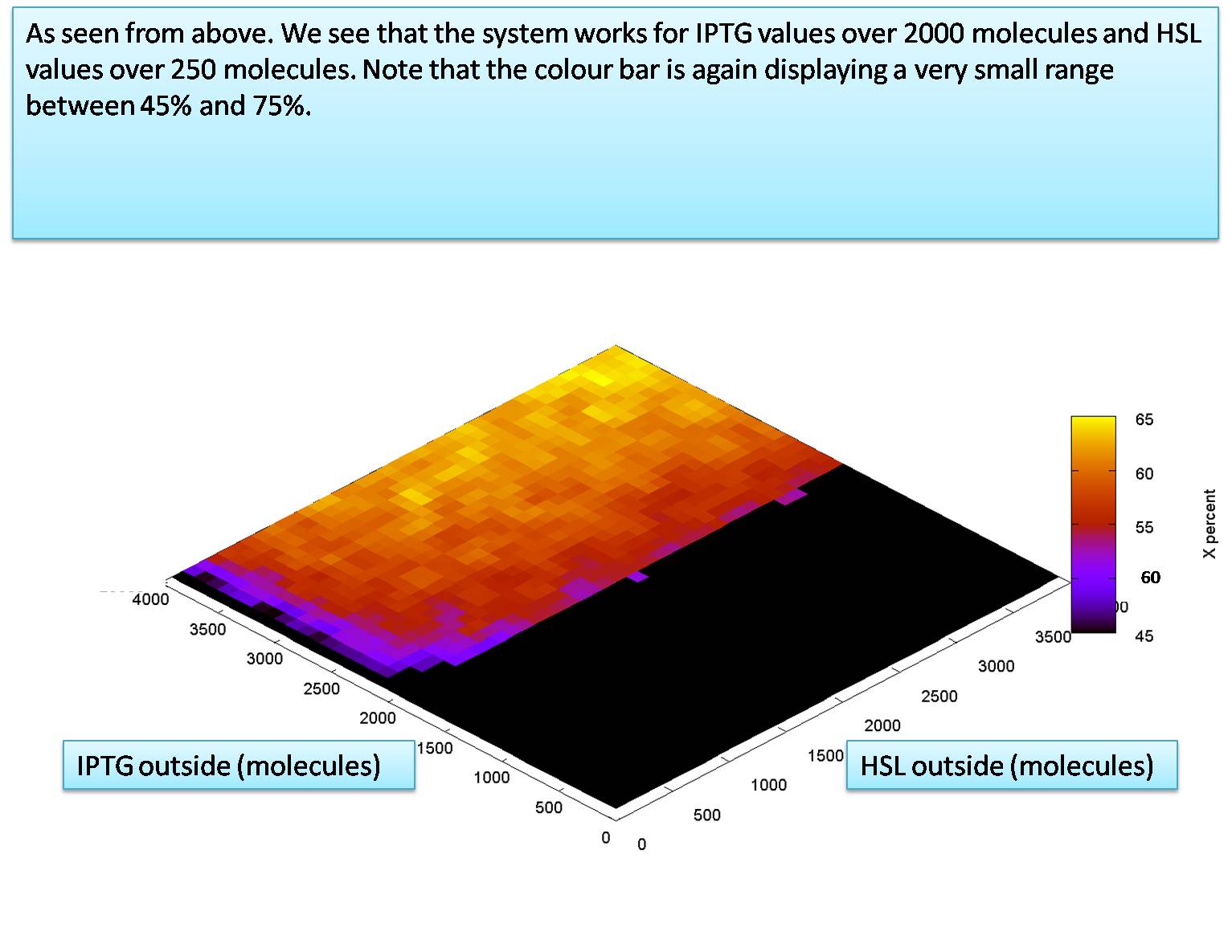Team:Aberdeen Scotland/parameters/invest 5
From 2009.igem.org
Nick Smart (Talk | contribs) |
Nick Smart (Talk | contribs) |
||
| Line 11: | Line 11: | ||
[[Image:Amended Model 1.jpg|center|700px]] | [[Image:Amended Model 1.jpg|center|700px]] | ||
| + | [[Image:Amended Model 2.jpg|center|700px]] | ||
| + | We know from the literature that K cI is expected to be greater than K tetR. This means that we can assume that in a worst case scenario K cI might be equal to K tetR. We use this worst case assumption now to check the relationship between K cI (= K tetR) VS. K P. | ||
| + | This is what we find: | ||
| + | |||
| + | [[Image:Amended Model 3.jpg|center|700px]] | ||
| + | [[Image:Amended Model 4.jpg|center|700px]] | ||
| + | |||
| + | So our system is also very robust for different values of K P. | ||
| + | |||
| + | The next three plots show what would happen if K P was equal to 500 molecules per cell | ||
| + | |||
| + | [[Image:Amended Model 5.jpg|center|700px]] | ||
| + | [[Image:Amended Model 6.jpg|center|700px]] | ||
| + | [[Image:Amended Model 7.jpg|center|700px]] | ||
| + | |||
| + | The required levels of HSL outside and IPGT outside | ||
| + | |||
| + | The only area left to explore is how the levels of the input molecules affect the output. We do this here in the same manner as was done for previous versions of the system. | ||
| + | |||
| + | |||
| + | [[Image:Amended Model 8.jpg|center|700px]] | ||
| + | [[Image:Amended Model 9.jpg|center|700px]] | ||
| + | [[Image:Amended Model 10.jpg|center|700px]] | ||
| + | |||
| + | Conclusion | ||
| + | |||
| + | Here is how our system functions with the parameters we believe to be correct: | ||
| + | |||
| + | [[Image:Amended Model 11.jpg|center|700px]] | ||
| + | |||
| + | We can conclude that this system is very robust for K cI, K tetR, K lacI and K P. It can be activated by lower levels of HSL and IPGT than its predecessors and consistently produces large quantities of the glue molecule, molecule X. We have also shown that it is capable of latching behaviour for quorum sensing, given the right promoter strengths on the luxI feedback lux box. | ||
{{:Team:Aberdeen_Scotland/footer}} | {{:Team:Aberdeen_Scotland/footer}} | ||
Revision as of 11:30, 10 August 2009
University of Aberdeen - Pico Plumber
The Amended Model
The model we now look at is the final step in our progression. We take a system with constitutive production of LuxR and have LuxI on a feedback loop using a weak Luxbox.
This allows us to use the literature value of KP while still getting good results. We see in the next few plots that the values of KCI and KTetR are very robust in this model:
We know from the literature that K cI is expected to be greater than K tetR. This means that we can assume that in a worst case scenario K cI might be equal to K tetR. We use this worst case assumption now to check the relationship between K cI (= K tetR) VS. K P. This is what we find:
So our system is also very robust for different values of K P.
The next three plots show what would happen if K P was equal to 500 molecules per cell
The required levels of HSL outside and IPGT outside
The only area left to explore is how the levels of the input molecules affect the output. We do this here in the same manner as was done for previous versions of the system.
Conclusion
Here is how our system functions with the parameters we believe to be correct:
We can conclude that this system is very robust for K cI, K tetR, K lacI and K P. It can be activated by lower levels of HSL and IPGT than its predecessors and consistently produces large quantities of the glue molecule, molecule X. We have also shown that it is capable of latching behaviour for quorum sensing, given the right promoter strengths on the luxI feedback lux box.
 "
"
